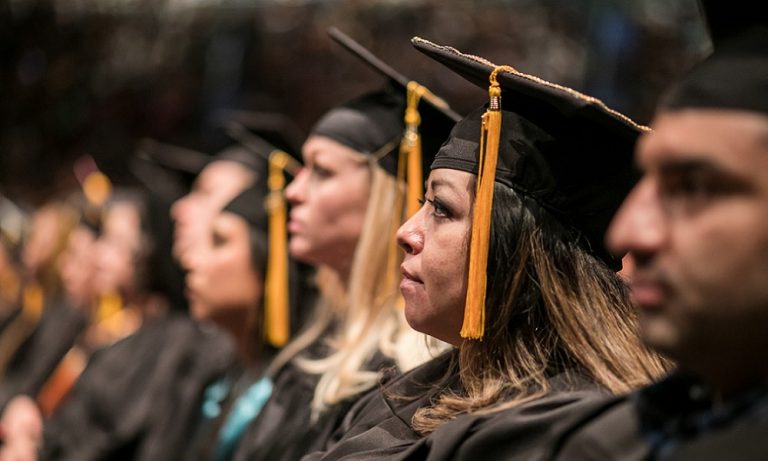ACE has issued a new report in cooperation with the MSI Information Project of New York University, Opportunity Roads: Exploring students’ academic and economic results in students in HBCUS, TCUS and MSISHistorically examines the results of the students in the institutions that serve the Black Colleges and Universities and Universities (HBCU), Tribal Colleges and Universities (TCU) and minorities (MSI). This analysis determined that these institutions play an important role in increasing economic mobility for colorful students, Hbcus, TCUS played an important role in emphasizing the importance of increasing investment and effects of MSI.
HBCUS, TCUS and MSIS are the spectacle of American higher education, a low-income students and a student of a million-colored students, including first generation students. About 20 percent of all higher education institutions are about half of all licensing students, such as HBCUS, TCUS or MSIS. Despite limited resources, these institutions provide accessible and affordable ways to higher education. MSIS Asian American and native American Pacific Islanti-Islantic organizations (AANAPISI), Alaska Native Hawaiian Service Institutions (HSI), HSI System Enterprises, Technology, Engineering or Articulation Programs (PBI) and native American services (PBI) and native American services (PBI) and native American services.
“HBCUS, TCUS and MSIS play a key role in expanding access to higher education and economic opportunity,” said ACE President Ted Mitchell. “Despite significant resource restrictions, these institutions have consistently strong results, provided students by means needed to develop academic and professionally.
“Our research demonstrates the vital role of HBCUS, TCUS, HSIS, Aanapisis, Annhsis, HSI STEDs, NASNTIS and PBIs,” said MSI Information Project, is one of the educational associate professors and reporting authors at New York University. “This research is particularly important thing, in the study and funded, inappropriate and MSIs, MSI and MSIs are the best concept of students and the development of students’ service and volume.”
The report is based on the previous ACE research on HBCUS and MSIS and the MSI generates information to analyze the results of the information project. Researchers examined several categories, including in several categories, including students of the labor market among students in these institutions, and the market gains and transfer rates. Researchers also analyzed the results of the special races and ethnic groups serving in the appointment of each mission-based institution and registration, and how they were compared to those who are not in MSI.
In general, researchers have more dated and certificates to target populations in HBCUS, TCUS and MSIS compared to other institutions. In addition, researchers have given more results than in the corresponding MSIs, which are not financed by the Federal Financing, and both have caused more results than in other institutions. Key finds include:
- Increased economic mobility: The students participating in HBCUS, TCUS and MSIS provide significant economic benefits. The graduates of the funded MSI have median gains higher than peers from similar institutions.
- Higher graduation rates for low-income students: Pell grant areas are graduated at a higher level of higher levels, in a higher degree of higher levels, but in the baseless institutions.
- Increased increased: HBCUS, TCUS and MSIS, HBCUS, TCUS and MSIS are more likely to be awarded to target populations. On average, HBCUS Award 455 Bachelor’s degree, black students compared to black students, non-hbcus, TCUS and MSIS in 146. Similarly, 944 bachelor’s degrees of Spanish students in Spain, compared to the HBCUs, TCUS and MSI in HBCUs, TCUS and MSI.
- Advanced transmission capabilities: HBCUS, TCUS and MSIS serves as important transfer directions for colorful students. For example, on average, register about nine times with more local American transfer students from TCU-I HBCUS, TCUS and MSIS.
The report emphasizes the need for the growing federal and charitable investment in these institutions. HBCUS, TCUS and MSIS have been historically with fewer resources with less resources, their contributions to their higher education and economic mobility are well documented in this report. Expansion of financial support to HBCUS, TCUS and MSIS can increase the success of the student, improve the results of the workforce and create greater economic opportunities for national communities.
It adds a short ACE student-centered research portfolio. Last month Ace, along with the Higher Education Research Institute at the University of California, Los Angeles presented a report that emphasizes the diversity of first-year college students. In addition, Ace has published its updated version Racial and ethnicity in higher education Last year, the growth rate of variety reveals a sustainable increase in the variety, but the extensive level of dissemination between the racial and ethnicity has expressed significant differences.
“This report is clearly investing in HBCUS, TCUS and MSIS, the future of MSIs,” said Hironao Okahana, ACE Education Futures Laboratory and Executive Director and Executive Director and Reporting Authors. “By ensuring that these institutions have been needed, we can ensure and expand the transformative impact on student success. We were pleased to work with the MSI data project to share these critical findings.”
This report under Nguyen and Okahana is the author of George Spencer, Odorico San Nicolas, Lauren Lewallen and Danielle Melidona.
The MSI Information Project launched in March 2023 is a research initiative that provides comprehensive information on the status of MSI financing and compliance status in the United States. The project aims to make an institutional decision in research, policy analysis and the role of MSI in higher education.
“This report uses a very national representative information sources to assess the success of MSI in the basic single and labor market,” said valuable concepts in News “Valuable concepts for the strengths and educators, and to determine the territories that deserve their owner success and more surveyed areas.”




